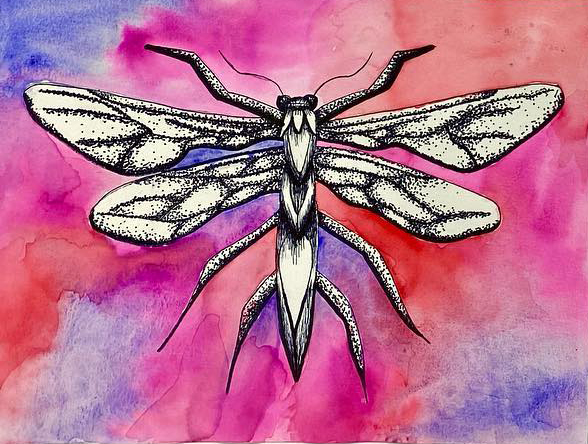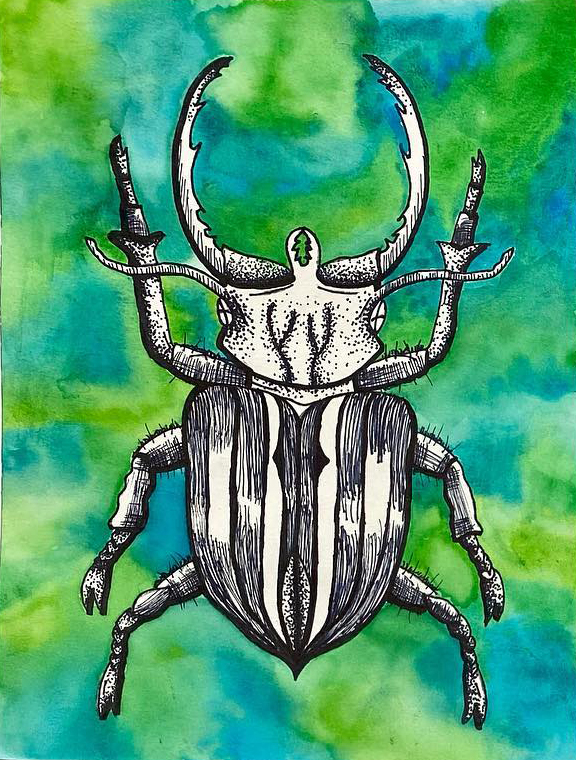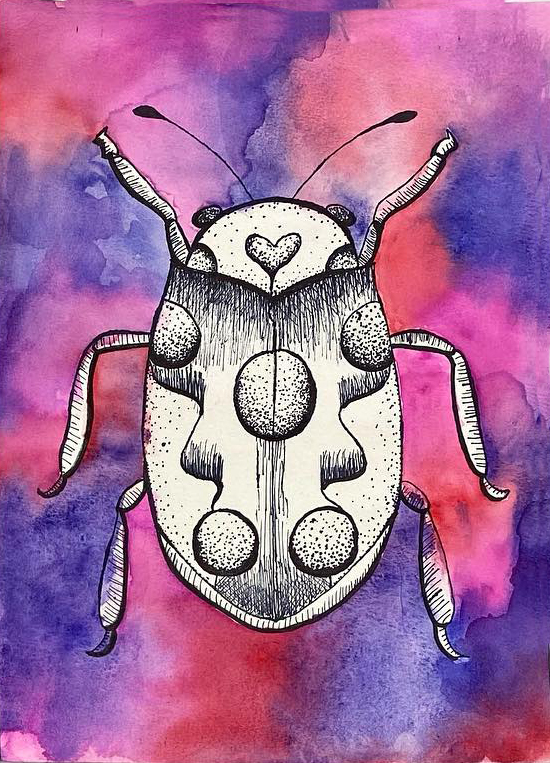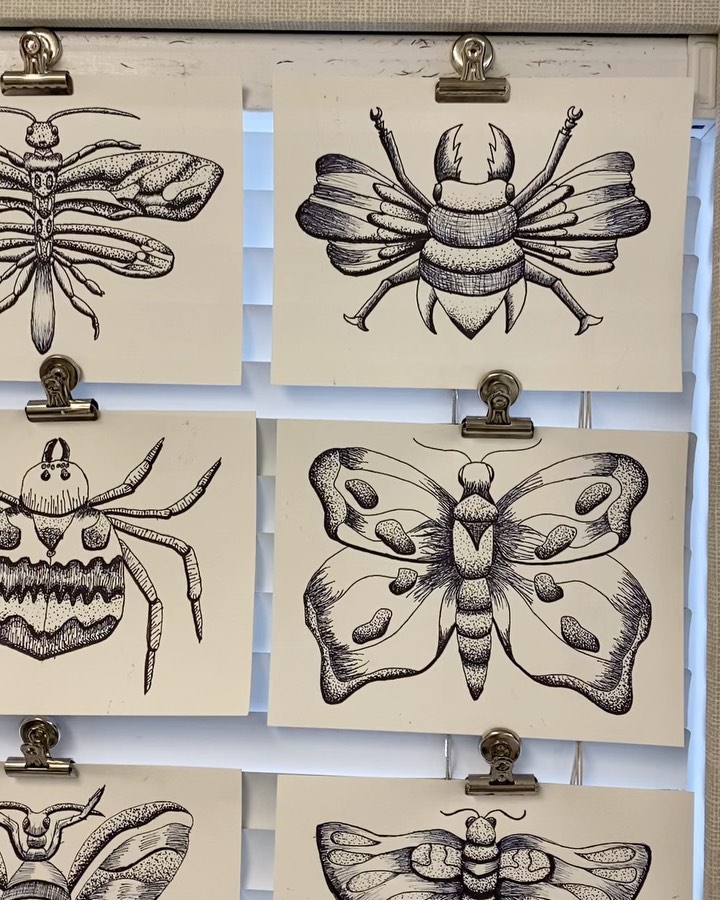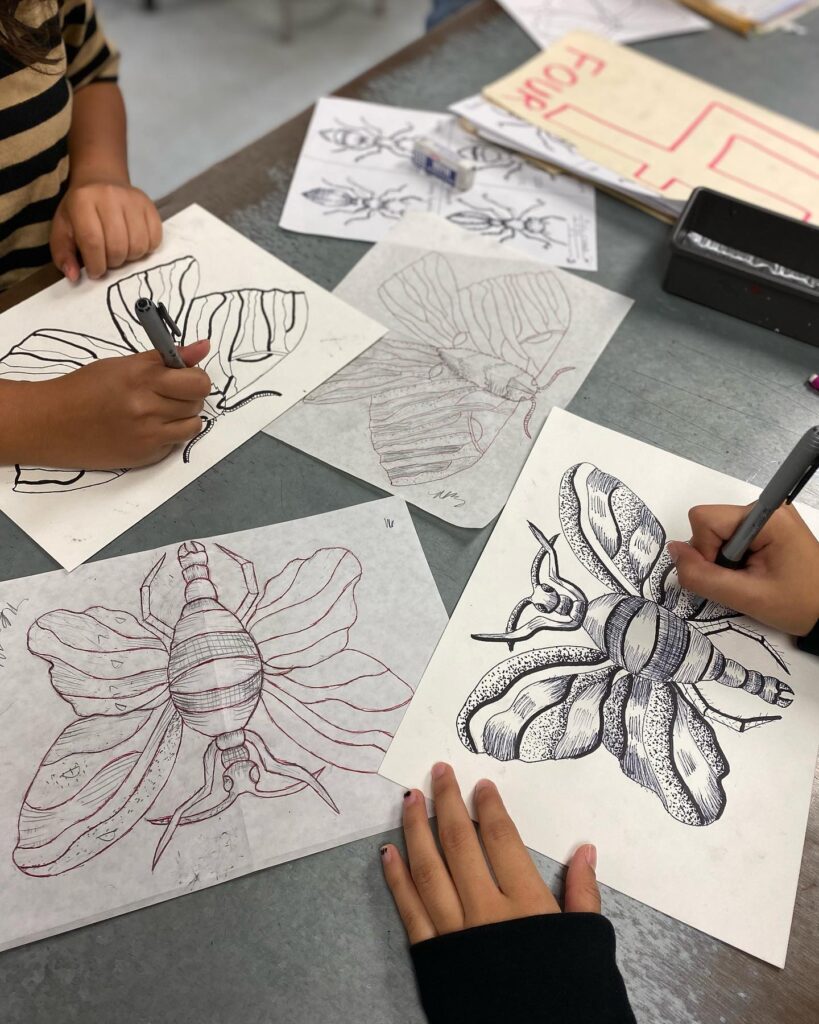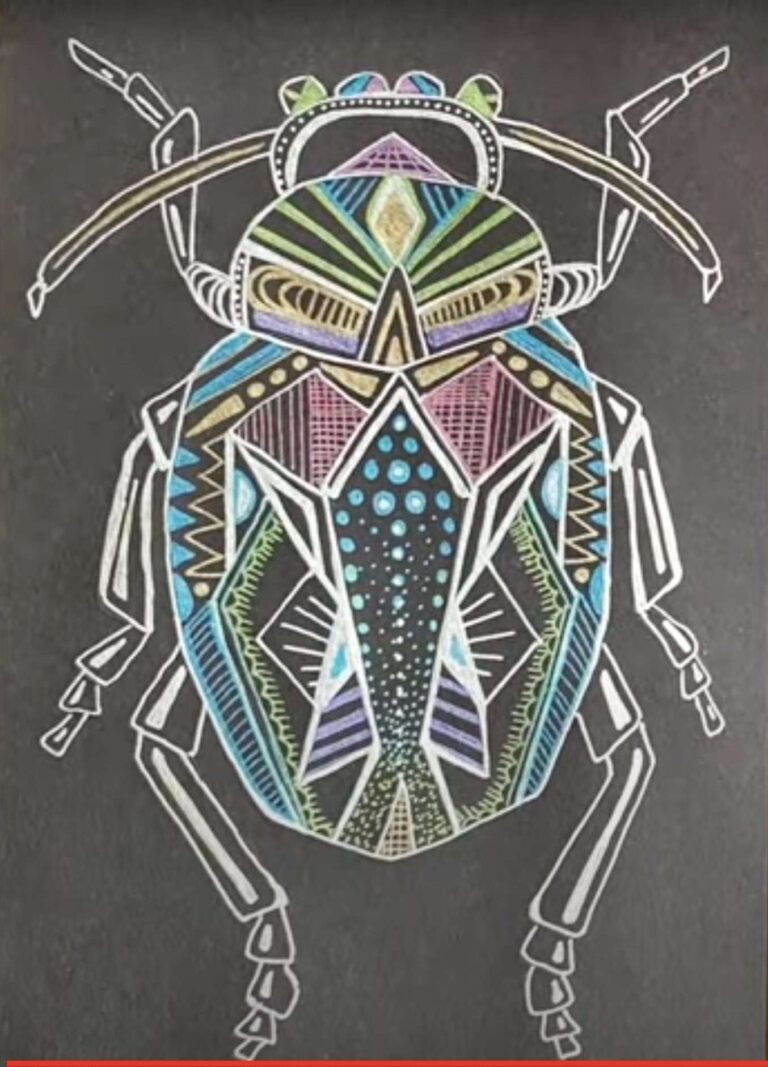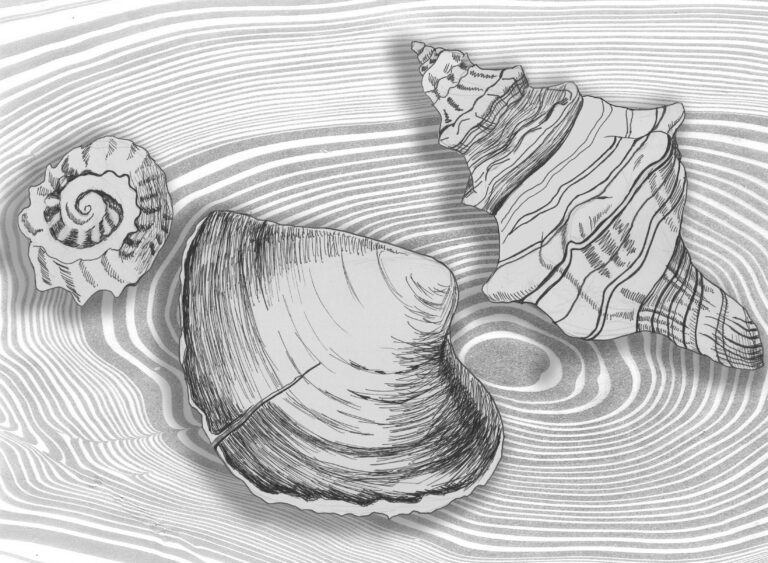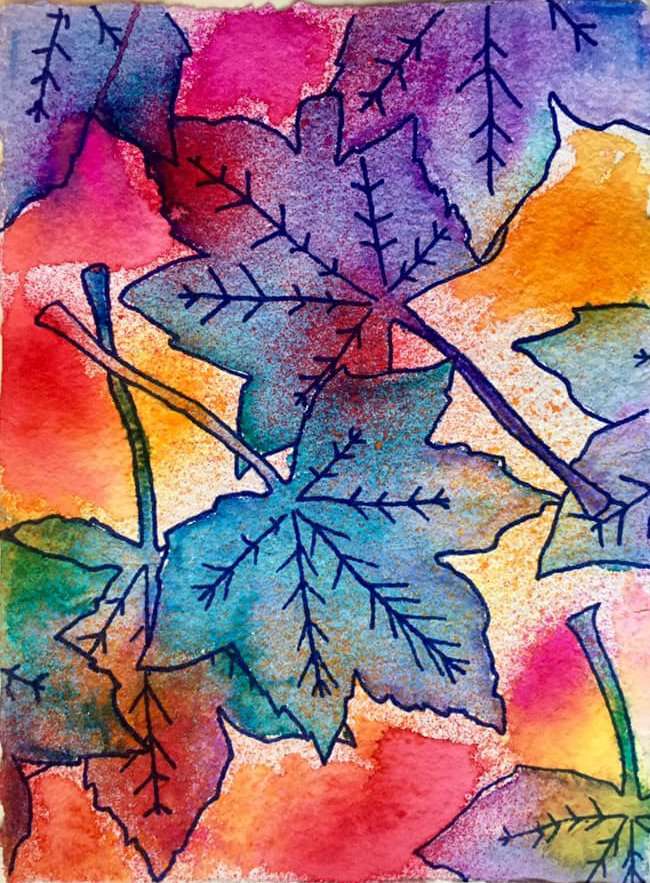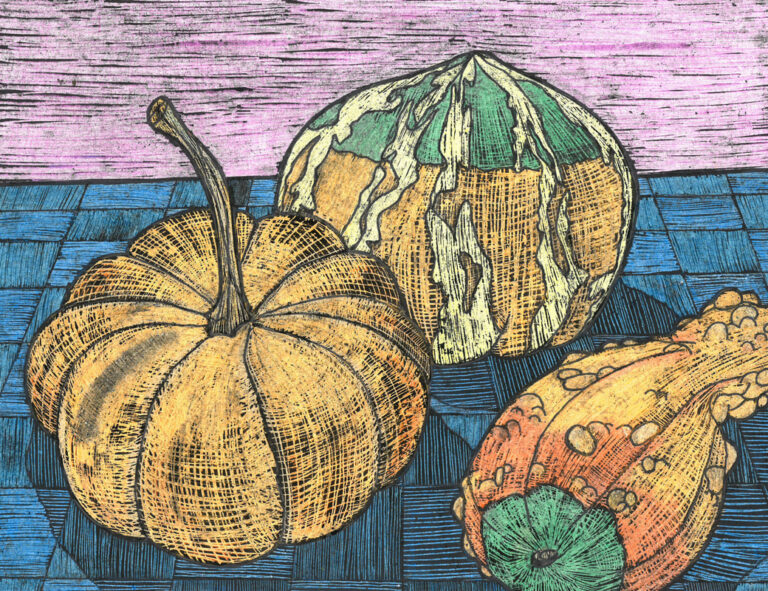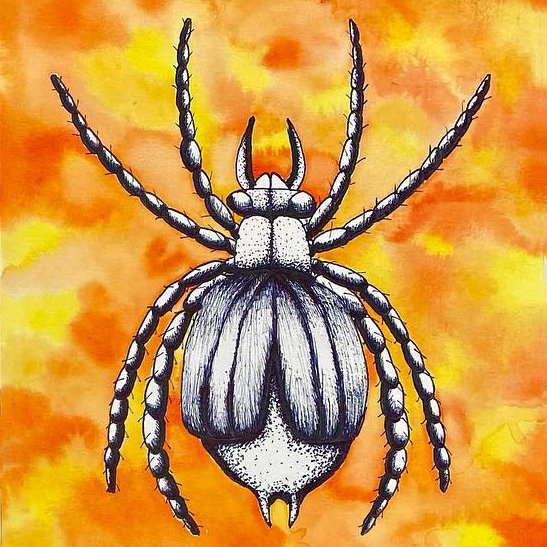
Grade Level
9-10Duration
About 15 periods, periods are 50 minutes each
Materials
Sharpie markers, watercolor paper, drawing paper, watercolor paint (this teacher used Crayola), transfer paper, or carbon paper
Media
Mixed Media
Lesson Objectives
The student will…
• observe and illustrate a realistic-looking fictional bug after observing bug imagery (including photos and scientific illustrations from the 1800s).
• understand the concept of symmetry and line of symmetry through their drawing
• show the use of stippling, hatching, and/or crosshatching in developing their illustration to show form and space.
• use a wet-on-wet watercolor technique to create a warm or cool background using analogous colors.
Introductory Activity
Students will examine many insects, including spiders, butterflies, and flies.
Lesson Process
Determine if your bug is best suited to be vertical or horizontal, and hold your tracing paper accordingly.
Fold the paper in half to create a line of symmetry. Draw only half of the body parts on one side. Then, turn over and trace the other side.
Students will modify and refine as they go to look natural. They can also add patterns if appropriate for their insect.
Transfer to watercolor paper next by using transfer paper or carbon paper.
Outline with ultra fine point sharpie marker.
Students then practice adding volume to an insect on a worksheet. Students practice stipple, hatch, and crosshatch on the worksheet in appropriate areas. In the last section, students practice adding hair and graduated value with a pencil.
Next, using a pencil, students practice using those techniques on their tracing paper version of the insect they created. After completing, students can move on to the final copy with the Sharpie markers. Students can add thicker lines in areas to add dimension. Students then develop the insects with stippling, hatching, and crosshatching. In addition, they add hairs and any other desired details, like texture or patterns.
Paint the background using analogous watercolor colors to enhance the insect. Before doing it on the final sheet, have students practice on a small piece of watercolor paper. Students first paint with water, dab in paint, and allow it to spread and blend naturally.
Vocabulary
realism, scientific illustration, symmetry, line of symmetry, reflexive symmetry, symmetrical shapes, stippling, hatching, crosshatching, texture, pattern, foreground, background, analogous colors, wet-on-wet watercolorResources
This book has a good collection of scientific illustrations of insects, but the teacher can use any available resources. Insects Reference Book: An Image Archive for Artists and Designers
Visual Directions
Worksheet
Author & Website/Blog
Michelle Breyer, @smms_studio_art


